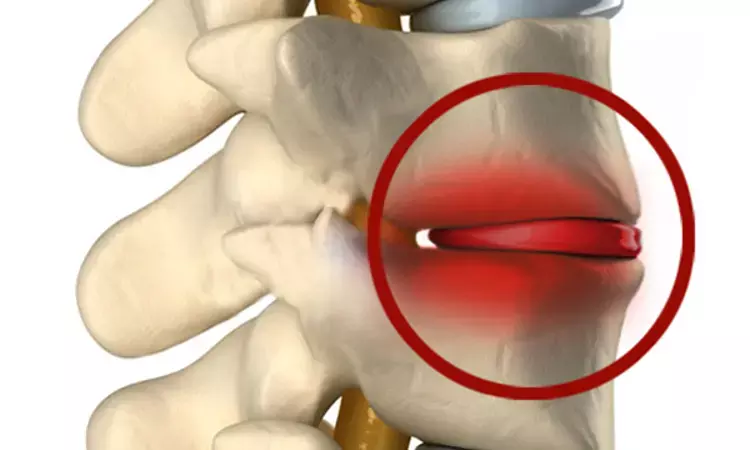- Home
- Medical news & Guidelines
- Anesthesiology
- Cardiology and CTVS
- Critical Care
- Dentistry
- Dermatology
- Diabetes and Endocrinology
- ENT
- Gastroenterology
- Medicine
- Nephrology
- Neurology
- Obstretics-Gynaecology
- Oncology
- Ophthalmology
- Orthopaedics
- Pediatrics-Neonatology
- Psychiatry
- Pulmonology
- Radiology
- Surgery
- Urology
- Laboratory Medicine
- Diet
- Nursing
- Paramedical
- Physiotherapy
- Health news
- Fact Check
- Bone Health Fact Check
- Brain Health Fact Check
- Cancer Related Fact Check
- Child Care Fact Check
- Dental and oral health fact check
- Diabetes and metabolic health fact check
- Diet and Nutrition Fact Check
- Eye and ENT Care Fact Check
- Fitness fact check
- Gut health fact check
- Heart health fact check
- Kidney health fact check
- Medical education fact check
- Men's health fact check
- Respiratory fact check
- Skin and hair care fact check
- Vaccine and Immunization fact check
- Women's health fact check
- AYUSH
- State News
- Andaman and Nicobar Islands
- Andhra Pradesh
- Arunachal Pradesh
- Assam
- Bihar
- Chandigarh
- Chattisgarh
- Dadra and Nagar Haveli
- Daman and Diu
- Delhi
- Goa
- Gujarat
- Haryana
- Himachal Pradesh
- Jammu & Kashmir
- Jharkhand
- Karnataka
- Kerala
- Ladakh
- Lakshadweep
- Madhya Pradesh
- Maharashtra
- Manipur
- Meghalaya
- Mizoram
- Nagaland
- Odisha
- Puducherry
- Punjab
- Rajasthan
- Sikkim
- Tamil Nadu
- Telangana
- Tripura
- Uttar Pradesh
- Uttrakhand
- West Bengal
- Medical Education
- Industry
Hamburg Assessment Score helps identify high risk patients of Spondylodiscitis

Hamburg, Germany:The novel Hamburg Spondylodiscitis Assessment Score (HSAS) by Heuer et al shows good fit identifying patients at low-, moderate-, high- and very high risk for in hospital mortality on admission.
Patients with spondylodiscitis often present after several weeks or months of progressively worsening symptoms, thus delaying the initiation of early treatment. When suspected, every effort should be made to enable rapid diagnostics starting with imaging, routine laboratory testing and identification of the pathogen by blood culture and/or biopsy of the infected intervertebral space or vertebral bone. Without accompanying neurological deficits, the prognosis is improved if antibiotic therapy and surgical management, if necessary, are initiated at an early stage. Despite advances in diagnostic modalities and increasing medical awareness spondylodiscitis is frequently overlooked, misdiagnosed or mismanaged due to non-specific symptoms. Unfortunately, delayed diagnosis of spondylodiscitis correlates with unfavourable treatment outcomes a swell as a mortality rate of up to 27%. A rapid initial triage is essential to identify patients at risk for a complicative disease course.
A retrospective data analysis of 307 patients with spondylodiscitis recruited from 2013 to 2020 was carried out. Patients were grouped according to all-cause mortality. Via logistic regression, individual patient and clinical characteristics predictive of mortality were identified.
Results: 14% of patients with spondylodiscitis died during their in-hospital stay at a tertiary center for spinal surgery. Univariate and logistic regression analyses of parameters recorded at hospital admission showed that age older than 72.5 years, rheumatoid arthritis, creatinine > 1.29 mg/dL and CRP > 140.5 mg/L increased the risk of mortality 3.9-fold, 9.4-fold, 4.3-fold and 4.1-fold, respectively. S. aureus detection increased the risk of mortality by 2.3-fold.
Age (>72.5 = 2 points), rheumatoid arthritis (3 points), creatinine (>1.29 = 2 points) and CRP (>140.5 = 2 points) were included in the development of a weighted risk score. An additional score point can be awarded when MSSA (methicillin-sensitive Staphylococcus aureus) is the causative pathogen (+1 point).
For practical application in practice the score is divided into four risk categories:
low risk (0 points),
moderate risk (1–3 points),
high risk (4–6 points) and
very high risk (7–10 points).
The implementation of the HSAS into clinical practice could ease identification of high-risk patients using readily available parameters alone, improving the patient's safety and outcome.
Further reading :
The Hamburg Spondylodiscitis Assessment Score (HSAS) for Immediate Evaluation of Mortality Risk on Hospital Admission
Annika Heuer , André Strahl , Lennart Viezens , Leon-Gordian Koepke , Martin Stangenberg and Marc Dreimann 1
J. Clin. Med. 2022, 11, 660. https://doi.org/10.3390/jcm11030660
MBBS, Dip. Ortho, DNB ortho, MNAMS
Dr Supreeth D R (MBBS, Dip. Ortho, DNB ortho, MNAMS) is a practicing orthopedician with interest in medical research and publishing articles. He completed MBBS from mysore medical college, dip ortho from Trivandrum medical college and sec. DNB from Manipal Hospital, Bengaluru. He has expirence of 7years in the field of orthopedics. He has presented scientific papers & posters in various state, national and international conferences. His interest in writing articles lead the way to join medical dialogues. He can be contacted at editorial@medicaldialogues.in.
Dr Kamal Kant Kohli-MBBS, DTCD- a chest specialist with more than 30 years of practice and a flair for writing clinical articles, Dr Kamal Kant Kohli joined Medical Dialogues as a Chief Editor of Medical News. Besides writing articles, as an editor, he proofreads and verifies all the medical content published on Medical Dialogues including those coming from journals, studies,medical conferences,guidelines etc. Email: drkohli@medicaldialogues.in. Contact no. 011-43720751


